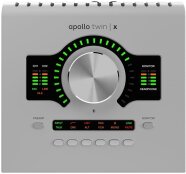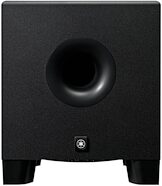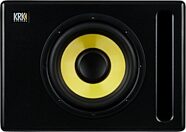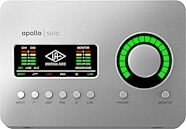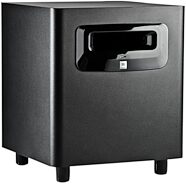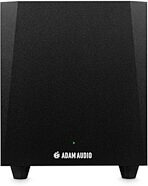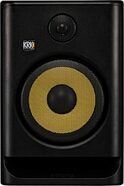
KRK RP8G5 Rokit 8 Generation 5 Studio Monitor
KRK's 8" Rokits are back and better than ever! Gen 5 adds Mix/Create/Focus modes so you can check your mixes with neutral, hyped, or mids-focused voicings.
$319.00
- 8 x$39.88
- No Credit Check6 x$53.17
- No Credit Check4 x$79.75
KRK RP5G2 Rokit G2 Powered 2-Way Active Monitor
No longer available at zZounds
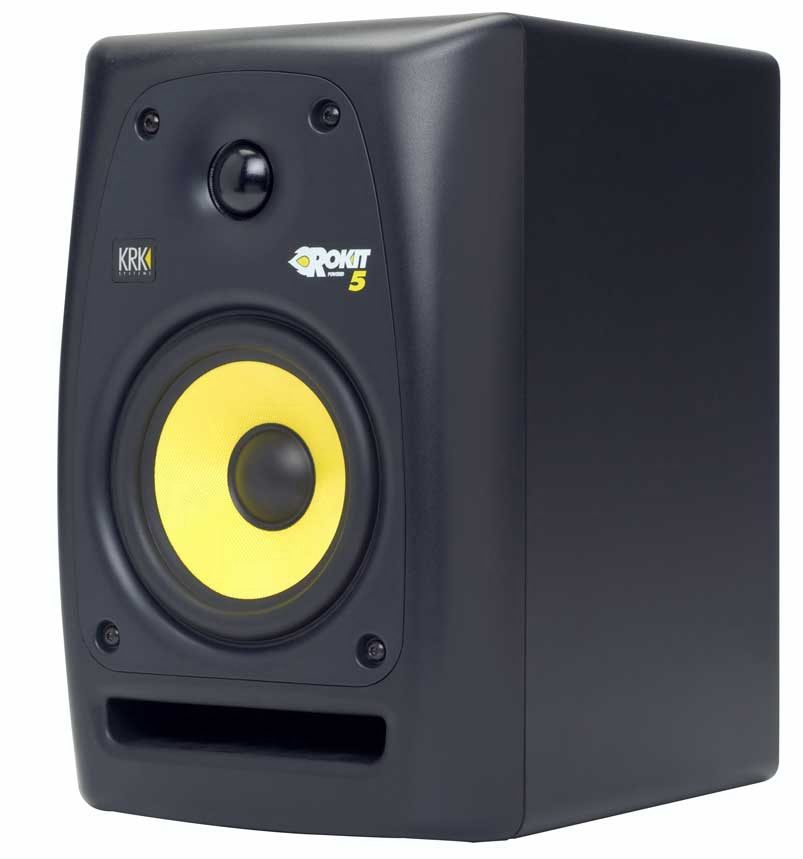
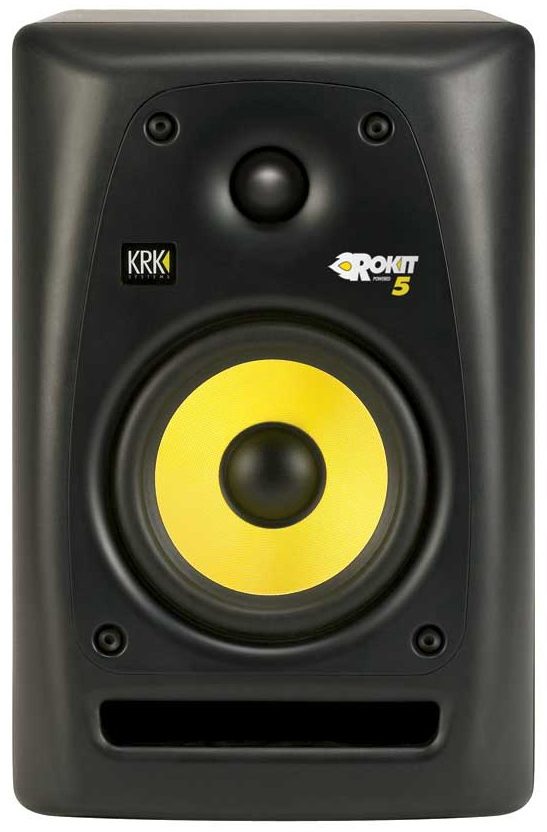
zZounds Gear Experts Say...
Trust in monitors that deliver a clean, flat sound. The RP5G2 Rokit G2s from KRK feature a speaker voicing that has an extremely accurate frequency response.
Overview
As part of KRK's Rockit series, the Rokit RP5 G2 is the next evolutionary step in a long line of successful and respected home studio monitors. Investing in a pair of accurate monitors may be the most important purchase you make for your home studio. Luckily, there's an active monitor that's been around the block more than a few times: the KRK RP5G2 Rokit. These "Generation 2" KRK RP monitors are as affordable and user-friendly as ever, and now they're even more accurate.
- 1-inch neodymium soft-dome tweeter
- 5-inch glass-aramid-composite cone woofer
- 52 Hz to 20 kHz frequency response
- High-frequency level adjustment knob
- Input gain control from +6 dB to -30 dB
- XLR, 1/4-inch balanced/unbalanced, and RCA inputs
- Front-firing bass port reduces boundary coupling with walls or corners
- Tweeter waveguide for high-frequency dispersion control
- Curved front baffle for dramatically reduced diffraction distortion
As a recording engineer, you need to trust your instincts, your ears, and most of all, your reference monitors. If your speakers aren't providing you with an accurate image, you won't know what you're listening to, and your mix will suffer.
So if you're shopping for your first studio reference monitors, trust in the name that's been trusted for decades by engineers around the world: KRK. read less
Easy To Set Up
With the home recording enthusiast in mind, KRK designed the Rokit RP5G2 to make adding accurate monitoring to your setup as hassle-free as possible. Because the RP5G2 is active (self-powered), you won't have to worry about finding or hooking up a separate, matching power amp. The Rokit's internal amplifier ensures maximum driver efficiency for tons of crystal-clear headroom and instant studio integration. With simple volume and high-frequency controls, the RP5G2s provide enough tone shaping to adjust your monitors to different rooms and projects.Ergonomic Design For Home Studios
If you're concerned that two controls aren't enough to combat bad room acoustics -- don't be! KRK incorporated several simple design elements to the RP5G2 cabinet in order to eliminate the most common monitor placement issues. For example, rear-firing bass ports, which typically extend a speaker's low-frequency range, tend to form "boundary-coupling" when situated near a wall, resulting in over-hyped bass… read more response. Front-firing ports keep this from being an issue with the Generation 2 Rokits. The cabinet design also helps eliminate diffraction inherent in traditional box-shaped monitors. When sound waves hit those sharp corners, they start to bounce around and "muddy up" the sound, but the KRK RP5 G2 incorporates the same curved edges as the higher-end KRKs to virtually eliminate diffraction issues. These two clever elements result in a sound that's more accurate and worry-free than other home studio reference monitors can deliver.Generation 2: Improved Drivers, Improved Sound
That classic yellow glass aramid composite woofer is still there, and its companion neodymium tweeter has been re-voiced for an even more neutral -- and therefore, more accurate -- performance. KRK also improved the tweeter's wave-guide design. High-end diffusion is even more directional and phase problems are cut down significantly. The result is a clearer impression of those ever-important transients that can otherwise wreck recorded instruments like cymbals and acoustic guitar, and can undesirably color the "air" in a vocal track. All in all, you simply get a clearer image of your mix with the second-gen KRK Rokits.Features:
- 45-watt bi-amplified powered speaker (30 watts LF, 15 watts HF)- 1-inch neodymium soft-dome tweeter
- 5-inch glass-aramid-composite cone woofer
- 52 Hz to 20 kHz frequency response
- High-frequency level adjustment knob
- Input gain control from +6 dB to -30 dB
- XLR, 1/4-inch balanced/unbalanced, and RCA inputs
- Front-firing bass port reduces boundary coupling with walls or corners
- Tweeter waveguide for high-frequency dispersion control
- Curved front baffle for dramatically reduced diffraction distortion
As a recording engineer, you need to trust your instincts, your ears, and most of all, your reference monitors. If your speakers aren't providing you with an accurate image, you won't know what you're listening to, and your mix will suffer.
So if you're shopping for your first studio reference monitors, trust in the name that's been trusted for decades by engineers around the world: KRK. read less
Specs
Specifications
Frequency Response
52Hz to 20kHz +/- 2.0dB
High Frequency Driver
1" Soft Dome
Low Frequency Driver
5" Aramid Glass Fiber
Cabinet Dimensions (HxWxD)
11.1" x 7.3" x 9.1"
Net Weight (each)
13.4 lbs.
Power Rating (HF/LF)
15W / 30W
Signal to Noise (HF/LF)
82dB / 90dB
T.H.D (HF/LF)
.05% / .02%
Input Impedance: Balanced
10kohm
Input Impedance: Unbalanced
10kohm
Crossover Frequency
3.0kHz
Subsonic Filter
45Hz
Fuse 5mm x 20mm
100V - 120V
1A-250V Slow Blow
220V - 240V
500mA-250V Slow Blow
KRK's Description
KRK RP5G2 Rokit G2 Active Monitor
The KRK RP5G2 Rokit G2 Powered Studio Monitor takes this KRK design to new heights. All of the great stuff that Rokits have been known for, including front-firing bass port, soft-domed tweeter, glass aramid composite yellow cone are still there, but the G2 Rokits feature refined voicing and a new curved baffle that looks great, reduces diffraction and provides even better monitoring accuracy.Features:
- Radically curved front plate design virtually eliminates diffraction distortion- Waveguide design provides amazing detail and imaging
- Front-firing port provides low freq extension without boundary coupling
- New speaker voicing for even more accurate frequency response
- 1-inch Neodymium soft dome tweeter
- Glass Aramid Composite Cone Woofer
Even More Accurate Than Before
KRK engineers and listening panel took the Generation 2 Rokits' speaker voicing to even more accurate levels. What you hear is what you are intended to hear, coloration is not part of the spec. This performance is brought to you by drivers that are custom-designed by KRK's world-class studio monitor engineering team, for clear, low-distortion performance.The Recessed tweeters may look the same, but they don't perform the same. KRK has designed a superior tweeter wave guide for the Rokit that provides optimal high frequency pattern control and focuses the sound outward, away from the cabinet. More conventional designs direct sound along the plane of the cabinet where waveform interaction can cause phase problems and increased diffraction. KRK knows a properly engineered high frequency wave guide is a critical component to great sound, and one key to their award winning performance.
Reviews
Reviewers gave this product an overall rating of 5 out of 5 stars.
(108 ratings)
Submitted August 2, 2010 by a customer from bayprop.net
"AMAZINGLY GOOD MONITORS - BUT ACOUSTICALLY TREAT AND TUNE YOUR ROOM!"
Verified Purchaser
zZounds has verified that this reviewer purchased this specific product from us.
I am very happy with these. I'd buy them again. But the huge improvement in playback sound came after I positioned the monitors correctly in my studio, added bass traps, and EQ notched the one remaining room boom frequency. Now the monitor sound is as close to perfect as I can reasonably expect.
Sound
Spectacularly even, balanced sound. The mids and highs are smooth and clear, and the bass is fat and punchy - in fact, the bass specs on these 5" speakers are only slightly less than the specs on KRK's 8" speakers, so little is lost. The only slight downside is they don't put out much at 12kHz and above, so they probably shouldn't be used to fine to the upper top end "air" in your mix, but who cares. After everything's compressed and down sampled, the air gets all squeezed out anyway! The objective of monitors is to provide a complete yet neutral representation of your music, which I believe these monitors do. These are small speakers and are best suited for near field use, so I have them situated less than 3' apart. The speakers must be placed at ear level, and they must be placed in the right position in your mixing room. Also, you really have to acoustically treat your mixing room in order to obtain accurate sound from any monitors, regardless of price. I installed a handful GIK bass trap panels at various places in my small office/studio and now these small, inexpensive monitors sound damn close to perfect at the listening position. I'm sure… read more that Genelecs probably sound slightly better for 5 or 10 times more money.
Features
Who needs features on monitors? You shouldn't be messing with features. You should use small near field monitors to give you a more or less accurate representation of what you're doing. I don't use any features.
Ease of Use
Simple.
Quality
I've only owned them for 2 months but they seem well built and solid.
Value
Unbelievably good value.
Manufacturer Support
Haven't had to deal with KRK, so I can't comment.
Musical Background:
40 years playing and recording
Musical Style:
Modern Hard Rock /R&B/Gospel/Jazz/World read less
Sound
Spectacularly even, balanced sound. The mids and highs are smooth and clear, and the bass is fat and punchy - in fact, the bass specs on these 5" speakers are only slightly less than the specs on KRK's 8" speakers, so little is lost. The only slight downside is they don't put out much at 12kHz and above, so they probably shouldn't be used to fine to the upper top end "air" in your mix, but who cares. After everything's compressed and down sampled, the air gets all squeezed out anyway! The objective of monitors is to provide a complete yet neutral representation of your music, which I believe these monitors do. These are small speakers and are best suited for near field use, so I have them situated less than 3' apart. The speakers must be placed at ear level, and they must be placed in the right position in your mixing room. Also, you really have to acoustically treat your mixing room in order to obtain accurate sound from any monitors, regardless of price. I installed a handful GIK bass trap panels at various places in my small office/studio and now these small, inexpensive monitors sound damn close to perfect at the listening position. I'm sure… read more that Genelecs probably sound slightly better for 5 or 10 times more money.
Features
Who needs features on monitors? You shouldn't be messing with features. You should use small near field monitors to give you a more or less accurate representation of what you're doing. I don't use any features.
Ease of Use
Simple.
Quality
I've only owned them for 2 months but they seem well built and solid.
Value
Unbelievably good value.
Manufacturer Support
Haven't had to deal with KRK, so I can't comment.
Musical Background:
40 years playing and recording
Musical Style:
Modern Hard Rock /R&B/Gospel/Jazz/World read less
32 of 33 people (97%) people found this review helpful. Did you?
Thanks for your opinion!
No longer available at zZounds
This is a carousel with product cards. Use the previous and next buttons to navigate.




